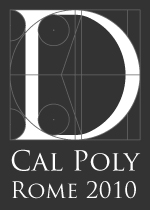Depending on which of the eight routes is taken to enter Piazza Navona two things become readily apparent, the magnitude of the plaza or the relationships of the surrounding buildings to the obelisk. Not all entrances reveal the centerpiece of the piazza, the obelisk is only displayed as a far off beacon to those approaching from the northern or southern edges. Even so, the scale of the piazza is not lost on those who approach from the transverse axes. Piazza Navona’s scale and numerous features grant a degree of freedom to visitors, by granting freedom of movement and offering possibilities of engagement.
Although the overall grandeur of Piazza Navona can be defined by its unique collection of an obelisk, fountains, and several churches, the true richness is provided by the degrees in scale that provide interactions between monuments and the buildings. Bernini’s La Fontana dei Quattro Fiumi, which holds the obelisk, is the most effective at providing degrees of scalar interaction with its surrounding setting. On each elevation of the fountain a thin vertical sliver is removed from the centerpiece of the stone base supporting the obelisk. Although we typically see a monument as a device, which demands attention unto itself, the fountain frames moments of everyday life in the area around it. Rather than acting as a representation of Rome itself, this monument reflects the character of the city.
It is this action of this fountain, providing a framework for the surrounding setting that gives the fountain a sense of permanence within Rome. This action reminds me to take in each building as unique, and integral to the fabric that makes up Rome’s identity.

